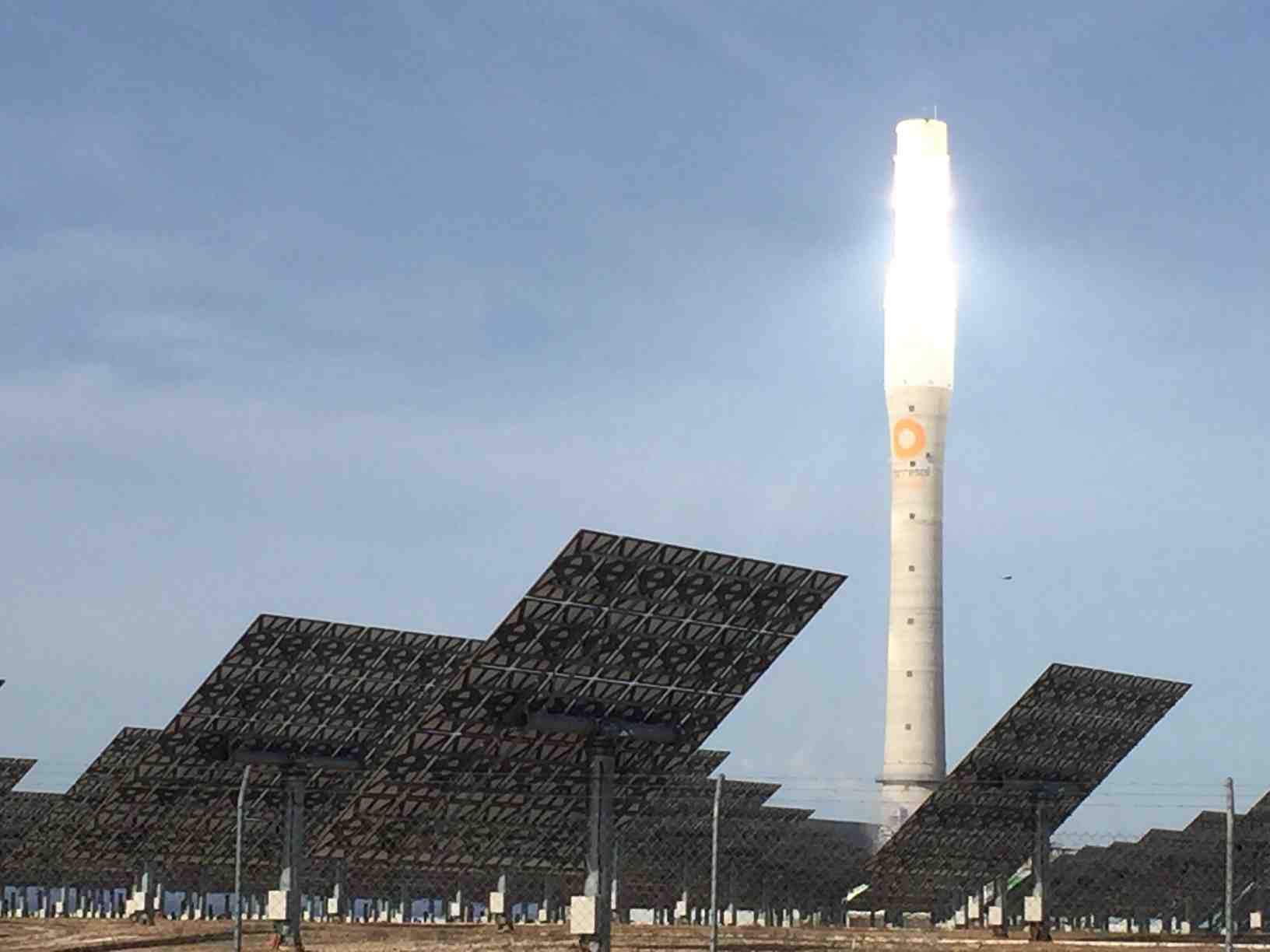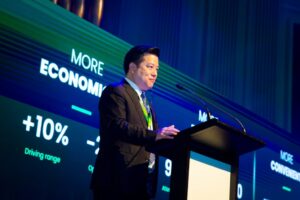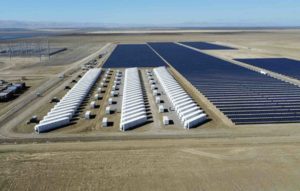
“It is the way to see the future”.
So says the sign at the entrance of Gemasolar, the world’s first commercial-scale solar tower and storage facility, in southern Spain. And the future is so impressive that the glow from the 140-metre solar tower at the heart of this unique plant can be seen from the city of Cordoba, some 80kms away.
The 19.9MW Gemasolar power plant first began producing electricity in May 2011, just two months after the Fukushima nuclear melt-down, and for nearly five years it has been the sole standard bearer for a technology many are convinced will play a major force in future electricity systems, including Australia’s.
The conservative International Energy Agency, for instance, says solar thermal (which includes solar tower and storage) could account for 12 per cent of all electricity generation by 2040. It would not be so indiscreet as to say how much Australia should have, but the implications are obvious.
Gemasolar was the first solar plant in the world to operate non-stop for 24 hours, and in June/July 2012 it set a record of 36 days providing non-stop power. That record was nearly broken in May/June last year –when it ran for 35 days non stop. In winter it has operated 12 days non-stop on several occasions.
Those records are expected to be handsomely beaten when the new generation of solar towers – bigger and more efficient – are finally brought into service in the next few years. These plants will be able to bring non-stop power to its customers all year round, answering the criticisms of fluctuating power from solar and wind energy.
“We have proved that this technology works,” says Raul Mendoza, the Germasolar plant manager as he guides RenewEconomy on a tour of the facility in early January.
Other similar plants had been expected to follow quickly on the heals of Gemasolar, including two 100MW plants in Spain using the same technology. But in the past five years, plans solar towers and other solar thermal technologies have been mostly sidelined by the plunging cost of solar PV and by changing energy market rules in Spain.
But now, as the value of storage becomes more apparent, solar towers may be about to have their day in the sun, with new projects planned in the solar rich regions of north and south America, and northern and southern Africa.
Sener, the Bilbao-based Spanish manufacturing giant that built the Gemasolar facility, through it partly owned subsidiary Torresol Energy, has now started construction of a 150MW solar tower with molten salt project at the huge Noor solar facility in Morocco.
Mendoza says that plant will benefit from some of the key learnings of the Gemasolar facility – including the optimisation of output during cloudy periods, faster ramp up times (35 minutes versus 90 minutes when it first came on line), maximizing storage efficiency and improved calibration.
The Noor tower will stand 250m tall, and its molten salt storage facility will be seven times bigger than Gemasolar’s. With Morocco’s superior solar resource, and an optimized array, the plant is expected to provide electricity 24/7 every day of the year.
Elsewhere, the US company Solar Reserve is putting the finishing touches to its 110MW Crescent Dunes facility in Nevada, is building another similar-sized plant in South Africa, and has a 260MW facility planned for Chile. Another Spanish group Abengoa is scheduled to build two 110MW solar tower and storage plants in Chile – presuming it gets over its current debt problems.
All companies have expressed interest in the Australian market, although this has proven difficult because of the lack of firm policy, and the massive excess of baseload capacity from its surplus coal plants.
Gemasolar, near the town of Fuentes de Andalucía in the predominatly flat farming lands in pretty much the mid-point between Cordoba and Seville, is truly an impressive sight.
Fittingly flanked on one side by fields of sunflowers, the central tower is surrounded by 2,650 heliostats (mirrors) – some up to 1km from the tower – that reflect the heat of the sun on a collector near the top of the tower. Each heliostat has 35 mirrors totalling 120sq meters of reflective surface.
This heats molten salt to temperatures of around 565C, which are then sent straight to a heat exchanger to create steam and drive a conventional turbine, or to be stored in tanks below for later use.
This means that the electricity can be dispatched when the market operators want it. Mendoza says Gemasolar has to inform the market operator of its dispatch capabilities by 10am the previous day. Predictability is key.
During the tour, Mendoza dispels some of the myths that often plague solar towers and storage.
The Gemasolar plant does not need gas back-up. It used to have a 17MW gas-fired generator but dismantled it when energy market rules were changed. It is no longer needed and the non-stop production records were set without gas.
It does not kill birds. Mendoza is confused by reports that the Ivanpah solar tower facility in California has become a “killing field” for bird-life. At Gemasolar, he says, the bird life has actually increased, according to surveys by the environment department, because birds have found a haven from the guns of hunters. Rabbits too.
And the facility does not blind pilots. Seville’s airport is just over 40kms away. There are no issues with airport authorities, Mendoza says.
Gemasolar was a pilot facility and the “full-scale” plants planned for the US, Chile and Africa are expected to run without interruption. Crescent Dunes has a contract to supply the city of Las Vegas with electricity from noon to midnight, to keep the lights during the afternoon and evening.
Mendoza says that when Gemasolar started “everything was new in this plant” – that included the design, development, construction, even operation and maintenance.
The rapid learning curve – in design, efficiency and production – means that the technology costs have decreased significantly.
“In these four years of operation, Gemasolar’s continual production has exceeded all expectations,” he says.
Gemasolar is coy about the costs of the technology, although technical press reports at the time that the Noor contract was signed two years ago suggest a price of around $US140/MWh.
That equates to the price of the Crescent Dunes tower in Nevada, although the South African version is expected to come in at around $US115/MWh. In Chile, Abengoa bid a price of less than $US100/MWh for the 250MW solar tower and storage and PV facility. That beat all bids from coal and gas generation.
Indeed, ACWA Power, which is building both the Noor plant for Sener, and the South Africa plant for Solar Reserve, says “baseload” solar will beat coal and other fossil fuels on price.
CEO Paddy Padmanathan told RenewEconomy last year that “base load” solar power – a combination of solar tower and storage and solar PV, would beat thermal energy in Africa and the Middle East.
In Abu Dhabi last month, he told RenewEconomy that he expected solar tower and storage prices to settle around $US80/MWh. We will have more of that interview later this week.
Many would like to see solar towers with storage in Australia. There has been a major push for a facility to replace the coal-fired generator about to be shut down permanently in Port Augusta in South Australia, and there was disappointment when an auction for next generations solar technology from the ACT government chose household and business battery storage rather than proposals from Solar Reserve and others.
Now that the nuclear royal commission has finally acknowledged that nuclear is an absurdly expensive generation technology that could not even fit into the South Australian grid, there may well be a greater push for such technology to be built in South Australia.
A solar tower plant is actually being built near Port Augusta, but only to generate heat and desalinated water for an innovative greenhouse technology that will grow tomatoes.
Pilots have been run with competing technology from solar in NSW, including by Vast Solar, and Abengoa has been involved in a possible 20MW solar and storage project in Western Australia.
A Sener spokeswoman says Australia has excellent radiation figures and both Sener and Germasolar plant operator Torresol Energy are looking for opportunities to develop new solar power plants.
“Our aim is to work with the countries in their process to implement renewable energies, especially in those sectors in which we have a significant technology advantage, and solar thermal is one of them.”











